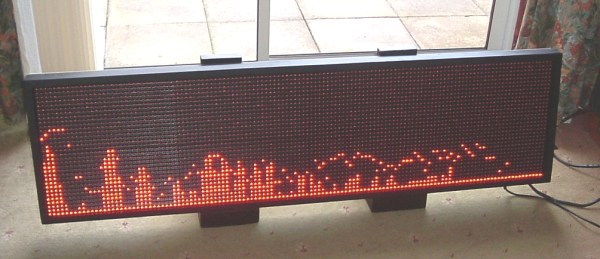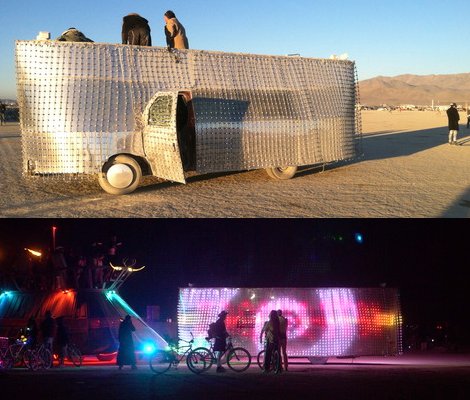Looks like a commercial LED display sign… right? Not even close. This is a project of [Jon’s] from over a year ago, and it is a very impressive 128×32 LED display board, driven using a single Raspberry Pi.
It’s made of eight “P10” 32×16 LED panels that he bought off of eBay, housed in a wooden frame he built himself. The display runs off of a single Raspberry Pi and can receive a video signal from anything with an Ethernet port. The individual boards are daisy-chained in a rather odd arrangement to minimize cable length, which [Jon] says helps with clocking the data fast — he’s able to parse 2 bits per pixel to refresh the display at an impressive 400+ frames per second.
To power the display, he’s using a single ATX power supply with the Pi connected to the standby 5V power line. This is to avoid a voltage drop which might cause the Pi to crash — when all LEDs are on the display can draw a healthy 32A of juice. The P10’s use shift registers to serially load the pixel data. At any time, the 4096 pixel display can have 1024 pixels on, which means a fairly fast clock is required to update the display.
[Jon] has shared all the source code on his blog, and has a fairly in-depth explanation of all the systems used. Check it out for yourself, and don’t forget to stick around after the break to see the display in action!

















